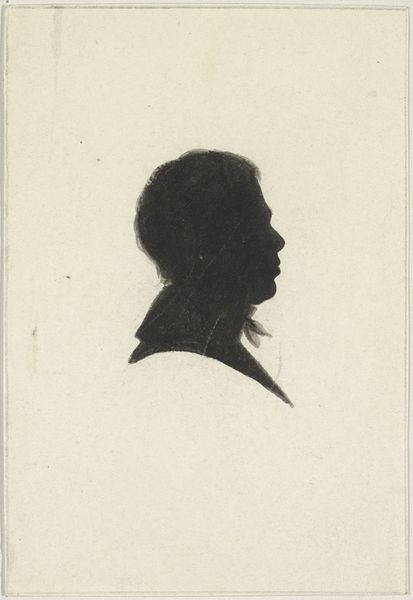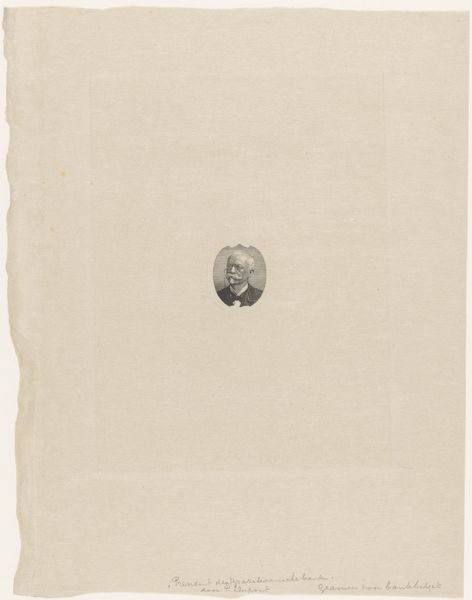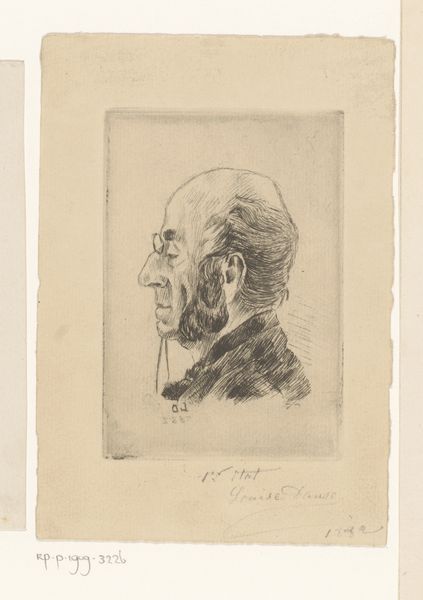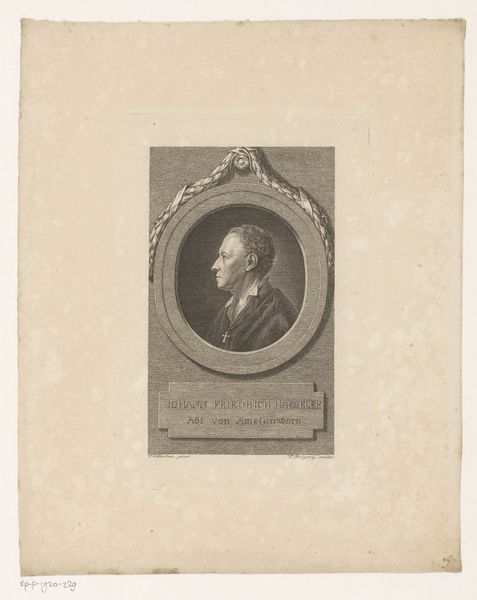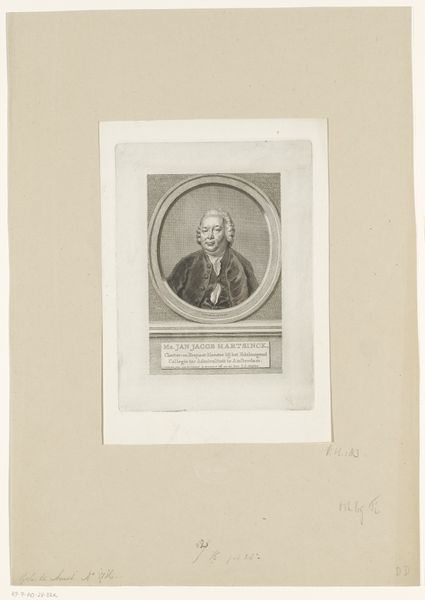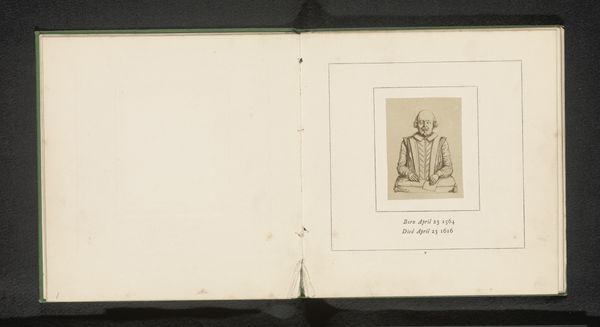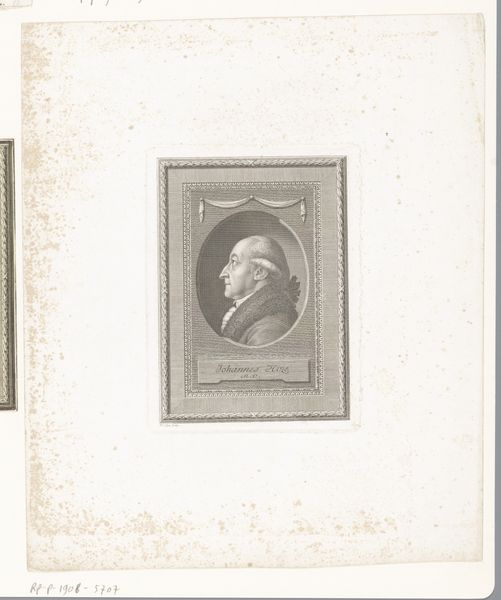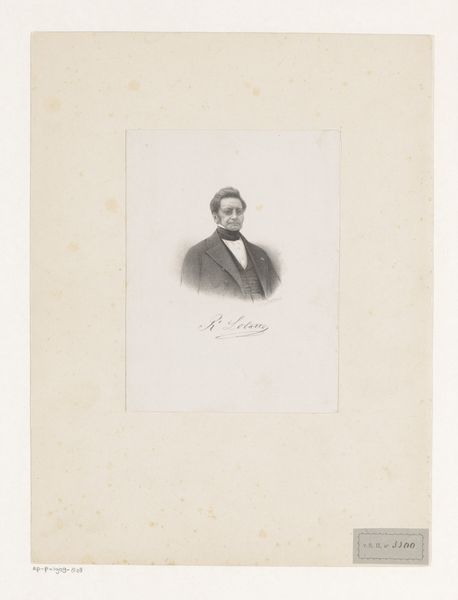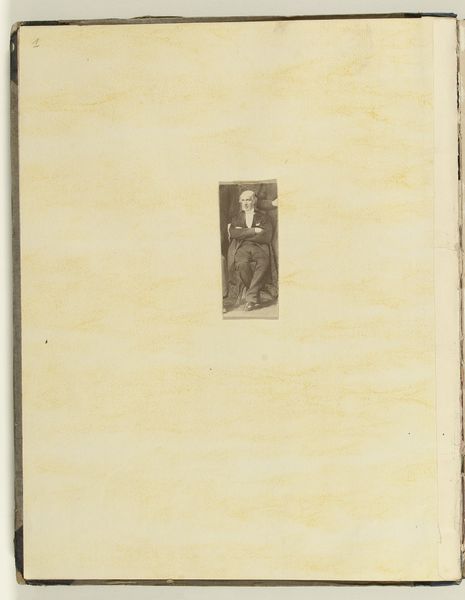
Portræt af jernstøber, agent Henrik Gamst (1788-1861) 1830 - 1833
0:00
0:00
drawing, paper, pencil
#
portrait
#
drawing
#
paper
#
romanticism
#
pencil
Dimensions: 153 mm (height) x 128 mm (width) (bladmaal)
Curator: This is C.A. Jensen's drawing, "Portrait of iron founder, agent Henrik Gamst (1788-1861)", dating from the early 1830s. What's your first impression? Editor: Spare. The use of pencil on paper feels stark and utilitarian, fitting for a subject linked to ironworks. The profile, sharply delineated, possesses a distinct aura of reserve. Curator: Indeed, the artist's handling of light and shadow is remarkable. The composition, restricted to the barest essentials of line and form, allows us to focus intensely on Gamst's features—the set of his jaw, the curve of his nose. Editor: I'm curious about the paper itself. You can see its texture, the subtle aging, almost like it's mirroring the materiality of Gamst’s trade. Pencil, a seemingly simple medium, takes on a unique weight here. Was this meant as a preparatory sketch, or a finished piece intended for display? The artist’s purpose changes our entire reading of it. Curator: It’s possible that the work’s "unfinished" quality emphasizes the inherent honesty of the sitter’s portrayal and enhances a connection between Romantic ideals and the rising industrial class in Denmark at the time. Editor: Thinking about the historical context, Gamst, as an "iron founder, agent," surely played a key role in a time of massive industrial changes. How would he see the labor he was putting in for his iron works, and does that reflection affect Jensen’s art here? Curator: His contribution becomes an integral part of our reading of it now, yes. Editor: Precisely! This piece embodies the tangible meeting point between Romantic artistic techniques and the era's booming industrial material developments. It all adds layers to it beyond the mere likeness. Curator: I find myself drawn back to the artist’s compositional restraint. In leaving out so much, Jensen paradoxically tells us even more about Gamst’s position in society and perhaps, his inner life. Editor: And by highlighting the materials involved, Jensen also unconsciously draws our attention to the labour that sustained figures like Gamst, underlining art’s relation to manufacture. Curator: A fascinating interplay indeed, of form and function, portrait and process. Editor: Absolutely, and it serves as a potent reminder that art can reveal profound connections to the past, especially when we consider materials and manufacturing.
Comments
No comments
Be the first to comment and join the conversation on the ultimate creative platform.

